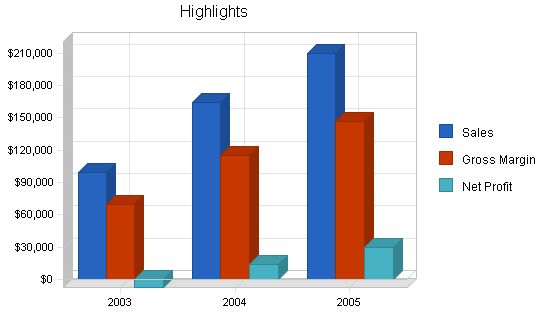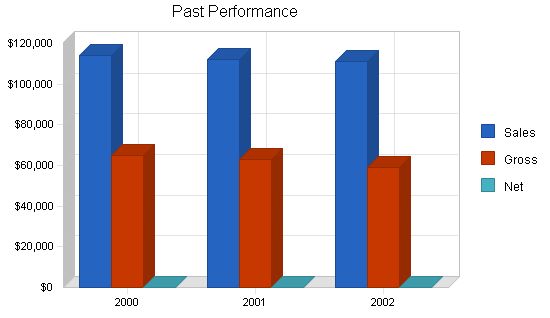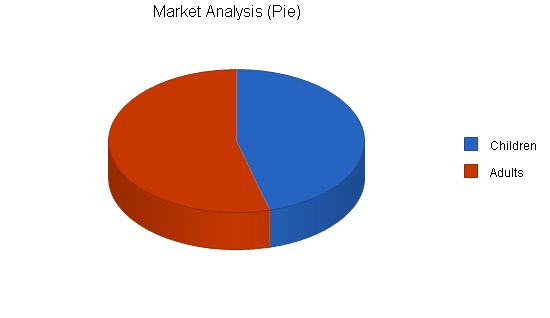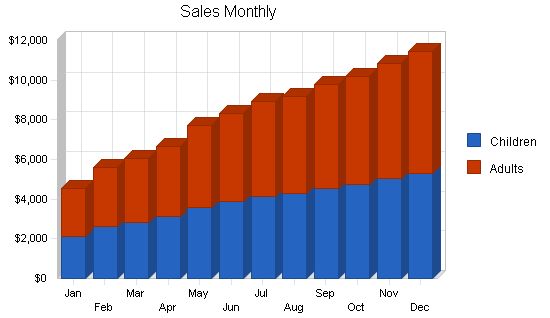Contents
Sports Memorabilia Business Plan
Jerseys R Us is a Massachusetts-based collectible sports jersey store. It focuses on offering famous player baseball, football, and cycling jerseys. The store, currently owned by Phil Garment, will reach profitability in its first year and continue generating profits in the future.
The sports collectible market, especially for sport jerseys, is massive and appeals to a wide range of collectors, from young kids to adults. With the rise of platforms like eBay, sport collectible trading has become even more popular. Jerseys has identified two main customer segments: children, who are primarily interested in baseball and football jerseys, and adults, who show interest in all three sports.
Jerseys R Us has identified three crucial factors for success. First, maintaining a comprehensive inventory that attracts customers. Second, actively listening to customer feedback to exceed expectations. And lastly, implementing and adhering to strict financial controls.
Jerseys will leverage its competitive edge in inventory to drive sales. Its advantage lies in having a more extensive and constantly changing inventory compared to competitors. This encourages return visits from customers curious about new products.
The owner and leader of Jerseys R Us is Phil Garment, a lifelong sports fanatic with a passion for the industry. With his background in a leading sports marketing firm and extensive networking, he has access to rare and hard-to-find jerseys. Phil’s MBA education further equips him with valuable project management skills necessary for running the business.

1.1 Mission
Jerseys R Us’ mission is to be the premier jersey collectible store by offering a wide selection of fair-priced jerseys and ensuring complete customer satisfaction.
1.2 Keys to Success
– Comprehensive, worthwhile inventory.
– Listening to customer feedback.
– Strict financial controls.
1.3 Objectives
– To be the premier sports jersey collectible store in the Mappleton area.
– Have constant inventory turnover to encourage frequent customer visits.
– Be known for excellent customer service.
Jerseys is an existing business being purchased by Phil Garment as a sole proprietorship. The previous owner is retiring and has sold the business, which includes the lease transfer and current inventory. Phil will also stock cycling jerseys in addition to baseball and football jerseys.
2.1 Company History
Jerseys R Us was established in 1980 by Chuck Jack, who is now retiring and selling the business to secure additional funds for his retirement account, partly funded by his wife’s pension.

| Past Performance | |||
| 2000 | 2001 | 2002 | |
| Sales | $114,000 | $112,000 | $111,000 |
| Gross Margin | $65,000 | $63,000 | $59,000 |
| Gross Margin % | 57.02% | 56.25% | 53.15% |
| Operating Expenses | $0 | $0 | $0 |
| Inventory Turnover | 1.53 | 1.66 | 1.76 |
| Balance Sheet | |||
| 2000 | 2001 | 2002 | |
| Current Assets | |||
| Cash | $12,000 | $10,000 | $8,000 |
| Inventory | $32,000 | $27,000 | $32,000 |
| Other Current Assets | $12,000 | $14,000 | $18,000 |
| Total Current Assets | $56,000 | $51,000 | $58,000 |
| Long-term Assets | |||
| Long-term Assets | $12,000 | $22,000 | $34,000 |
| Accumulated Depreciation | $3,400 | $5,200 | $6,700 |
| Total Long-term Assets | $8,600 | $16,800 | $27,300 |
| Total Assets | $64,600 | $67,800 | $85,300 |
| Current Liabilities | |||
| Accounts Payable | $3,200 | $2,500 | $15,000 |
| Current Borrowing | $1,700 | $1,300 | $2,200 |
| Other Current Liabilities (interest free) | $0 | $0 | $0 |
| Total Current Liabilities | $4,900 | $3,800 | $17,200 |
| Long-term Liabilities | $12,000 | $8,000 | $8,000 |
| Total Liabilities | $16,900 | $11,800 | $25,200 |
| Paid-in Capital | $0 | $0 | $0 |
| Retained Earnings | $47,700 | $56,000 | $60,100 |
| Earnings | $0 | $0 | $0 |
| Total Capital | $47,700 | $56,000 | $60,100 |
| Total Capital and Liabilities | $64,600 | $67,800 | $85,300 |
| Other Inputs | |||
| Payment Days | 0 | 0 | 0 |
2.2 Company Ownership
Phil Garment is the sole proprietor.
Products
Jerseys R Us sells famous players’ collectible sport jerseys, typically from baseball, football, and cycling. There is a huge market for famous player jerseys, especially in Massachusetts which has rabid sport fans. The products will be procured through two sources, personal networking and eBay. While some customers might actually wear these previously worn jerseys, most are purchasing them as collectibles to display.
Market Analysis Summary
The sports collectible market is huge, particularly for sport jerseys. The ages of collectors range from young kids to adults. With the growing popularity of eBay, sport collectible trading has become even more popular with a much more open market. Jerseys has segmented the market into two niches: children and adults. Children are most interested in baseball and football jerseys, while adults primarily prefer cycling jerseys.
Jerseys will employ different strategies to market itself to these two segments. While using an active marketing strategy, they will also rely on walk-by traffic as a source of walk-in customers.
4.1 Market Segmentation
Jerseys will target two types of customers, each with their own demographics.
- Children: typically ages seven to fifteen, they often participate in sports and enjoy collecting sports memorabilia. While they have limited discretionary income due to their age, they save money to spend on sports-related purchases.
- Adults: typically very active in sports, either playing or avidly following. Sixty-five percent of adult memorabilia collectors began collecting as children and have continued into adulthood. They have an average income of $45,000 and a college education rate of 55%. This group enjoys watching sports, with a minimum of ten live sport viewings per year.

– 2003, 2004, 2005, 2006, 2007
– Potential Customers: Growth, CAGR
– Children: 8% growth, 34,878 (2003) – 47,450 (2007), 8.00% CAGR
– Adults: 7% growth, 41,223 (2003) – 54,036 (2007), 7.00% CAGR
– Total: 7.46% CAGR, 76,101 (2003) – 101,486 (2007)
4.2 Target Market Segment Strategy:
*Jerseys* acknowledges the need to communicate with both market segments separately. They will advertise in child-focused magazines for the child market and adult publications for the adult segment. They will also sponsor little leagues. Walk-in traffic will primarily be adults due to the store’s location in a busy commercial retail area.
4.3 Industry Analysis:
The sport collectibles market is primarily comprised of mom and pop stores. Larger stores or chains are rare due to the unique, one-of-a-kind nature of the products. eBay has expanded the market, but prices have increased due to bidding frenzies. *Jerseys* capitalizes on their market knowledge to avoid overpriced auctions and focus on unnoticed auctions with lower bids.
4.3.1 Competition and Buying Patterns:
*Jerseys R Us* competes with local sports collectible retail stores that focus more on equipment. eBay is also a source of competition, although prices may not always be reasonable. Buying habits depend on the customer’s age and market knowledge. Younger customers prefer to touch and feel the products, while older customers rely on descriptions. More market knowledge leads to more confidence in bidding or purchasing unknown items.
Strategy and Implementation Summary:
*Jerseys* differentiates itself through its constantly changing selection and large inventory. They use a multi-pronged marketing strategy to attract customers from both market segments.
5.1 Competitive Edge:
*Jerseys R Us* maintains a competitive edge through their large and revolving inventory. They have an excellent procurement system supported by personal contacts and eBay skills.
5.2 Marketing Strategy:
*Jerseys* employs advertisements tailored to both adults and children to raise awareness. They also sponsor little league sports leagues and leverage their location in a high foot traffic area.
5.3 Sales Strategy:
The sales strategy focuses on showcasing the wide variety of jerseys and encouraging frequent visits with the turnover of inventory. *Jerseys* also takes customer requests and preferences, setting them apart from competitors who don’t solicit input. This customer-centric approach drives short-term and long-term sales.
5.3.1 Sales Forecast:
Sales growth for *Jerseys* is projected to be small but incremental initially due to the transition from the old business to the new one. Growth is expected to increase as old customers become familiar with the new owners and new customers discover *Jerseys*.

| Sales Forecast | |||
| 2003 | 2004 | 2005 | |
| Sales | |||
| Children | $46,160 | $76,259 | $97,731 |
| Adults | $53,058 | $87,654 | $112,334 |
| Total Sales | $99,218 | $163,913 | $210,065 |
| Direct Cost of Sales | 2003 | 2004 | 2005 |
| Cost of Jerseys | $29,766 | $49,174 | $63,019 |
| Other | $0 | $0 | $0 |
| Subtotal Direct Cost of Sales | $29,766 | $49,174 | $63,019 |
5.4 Milestones
- Completion of business plan.
- 100th new customer.
- First month of serious growth.
- Sustainable profit.

Milestones:
| Completion of business plan | 1/1/2003 | 1/15/2003 | $0 | Phil | Strategic |
| 100th new customer | 1/1/2003 | 1/31/2003 | $0 | Phil | Marketing |
| First month serious growth | 1/1/2003 | 3/31/2003 | $0 | Phil | Operations |
| Sustainable profit | 1/1/2003 | 7/31/2003 | $0 | Phil | Operations |
| Totals | $0 |
Management Summary
Phil Garment began his sports fanaticism at nine years old by trading baseball cards. His fascination with sports continued throughout his life, both as an observer and a participant. While earning his Bachelors of Arts from Washington & Jefferson College, he played varsity baseball and was part of the cycling team. After graduation, Phil worked for a prestigious sports marketing firm in NYC for five years as a support account manager. He supported promotional activities for sports professionals and ensured their comfort. Phil’s dedication and desire to exceed client satisfaction led him to form long-term friendships with professional athletes.
Although Phil enjoyed working in the sports industry, he recognized the need for advanced business skills. He pursued an MBA at the University of Massachusetts to fill this gap. After graduation, Phil was unsure of the job he wanted. A friend suggested he open his own sports collectible store, initially dismissing the idea as beneath him. However, he realized that it would challenge his business skills while allowing him to work in the industry he loves. While writing his business plan, Phil heard about a retiring owner of a sports jersey collectible shop. They agreed on a price, and Phil is currently continuing the business as Jerseys R Us.
6.1 Personnel Plan
- Phil: marketing, operations, and customer service functions
- Support staff: part-time employees who assist Phil with customer service, inventory tracking, and new purchases
| Personnel Plan | |||
| 2003 | 2004 | 2005 | |
| Phil | $30,000 | $40,000 | $45,000 |
| Support staff | $12,000 | $17,800 | $22,000 |
| Total People | 2 | 2 | 2 |
| Total Payroll | $42,000 | $57,800 | $67,000 |
Hello!
I’m Andrew Brooks, a seasoned finance consultant from the USA and the mind behind phonenumber247.com.
My career is built on a foundation of helping individuals and businesses thrive financially in an ever-changing economic landscape. At phonenumber247.com, my aim is to demystify the complex world of finance, providing clear, actionable advice that can help you navigate your financial journey with confidence. Whether it’s personal finance management, investment strategies, or understanding the nuances of market dynamics, I’m here to share insights and tools that can propel you towards your financial goals.
Welcome to my digital space, where every piece of advice is a step closer to financial clarity and success!
